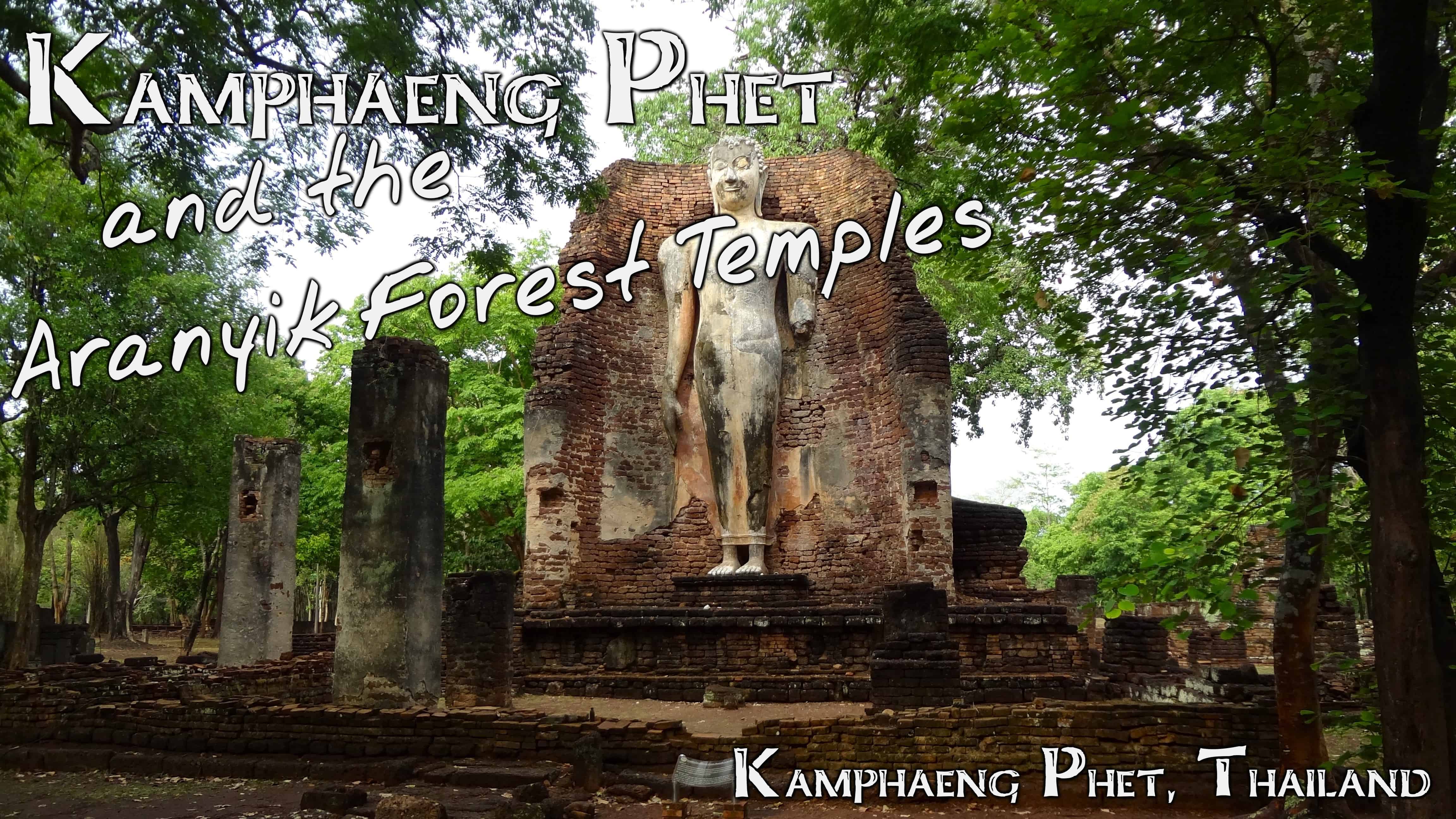
Fresh from the dry plains of Old Sukhothai, the riverside town of Kamphaeng Phet made for a picturesque and pleasant change. Still, the reason I was here was the same. Like other neighboring towns such as Si Satchalanai and Phisanulok, Kamphaeng Phet also has a number of Sukhothai-era ruins, however it is much less visited than the other three.
The town is laid out vaguely north-south along the Ping River. The new city is to the south and the moat and old city wall are to the north. Curiously, it is not built along a square-moat plan of Khmer cities or the round moat of Dvaravati, but instead is built according to the geographic contours of the river.

The river walk of Kamphaeng Phet.
The town’s riverside makes for a great walk, including the sight of 2 very old looking stupas in the middle of a field across the river. Unfortunately, the attractive riverscape comes to an abrupt end at the bridge over the river leading between the bus station and the main intersection of the town. Here, the divide between the inhabited and sparse parts of the town really make themselves clear as the riverwalk immediately fades to nothing.

The old city wall.
Along the main road, the old city wall is quickly apparent. And although it hardly looks formidable in its present state anymore, it still has more of a presence that of Sukhothai’s wall, which only appeared a grown-over mound.
The well-maintained historical park runs for a good length and is fenced-in the entire way. And, for those who don’t care to pay the entrance fee, it’s easily visible from the sidewalk as well. Inside there is a brick walkway leading the way from ruin to ruin, but there are no informational signs giving context and very few even giving names to what you are looking at.
This is unfortunate, since, unlike Sukhothai, little lore exists about any legendary founding and histories of Kamphaeng Phet. There is a style distinctive from Sukhothai, particularly in its Buddha statue, which had quite different faces, and even included a reclining Buddha, something I didn’t see in Sukhothai. However there were also some similar motifs that I’ve only seen in Sukhothai, like elephants rounding the base of a stupa.




Ruins, including the stone walls.
Small walls made of standing stones seemed to separate the individual temples from one another. Their fallen-apart state made it clear that they were part of the original temples and not a recent addition like the brick walkway that was leading me around.
In figuring out these ruins, it also didn’t help that the local museum was once again closed down on the single day I happened to be there.
While the Old Town’s historical park may have once been more impressive, the highlight of Kamphaeng Phet is the Aranyik Forest Temples. A small walk away from the southern end of the central ruins, these temples were once the domain of monks who dwelt outside the city walls. The closest translation of Aranyik I could come up with was of the forest or forest-dwellers.
Living up to their name, what was left of these ruins were quite spectacular and some had been very much reclaimed by the forest in which they stood. The same kind of brick path led the way through these temples which, although perhaps not as detailed and intricate as the ones in town, seemed to be much larger in scale. However, quite a few were decayed beyond the point of guessing what they could have ever looked like.





This area also seemed to be a popular spot for locals to just come and relax. I saw quite a few joggers, and just a few people strolling about in the shade. But, after seeing the temples, a park officer was kind enough to give me a ride to the bus station and then it was simply a matter of waiting for a bus back home to Bangkok.

One of the old stupas on the way to the bus station.













